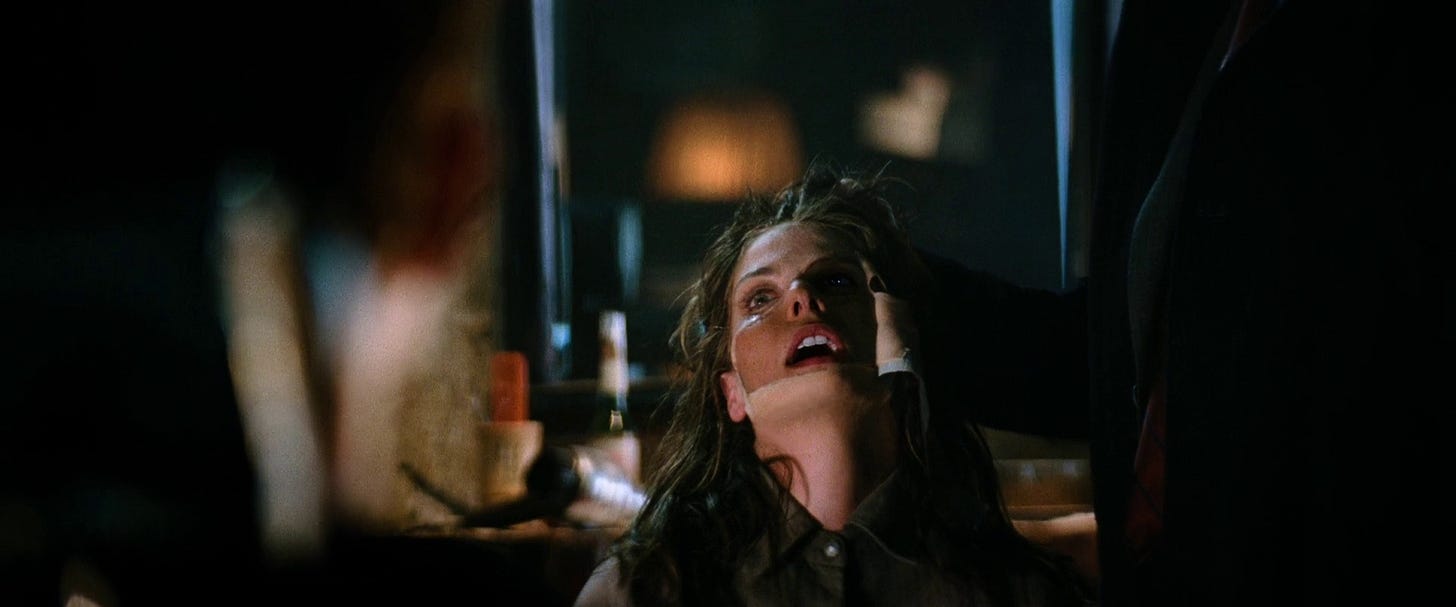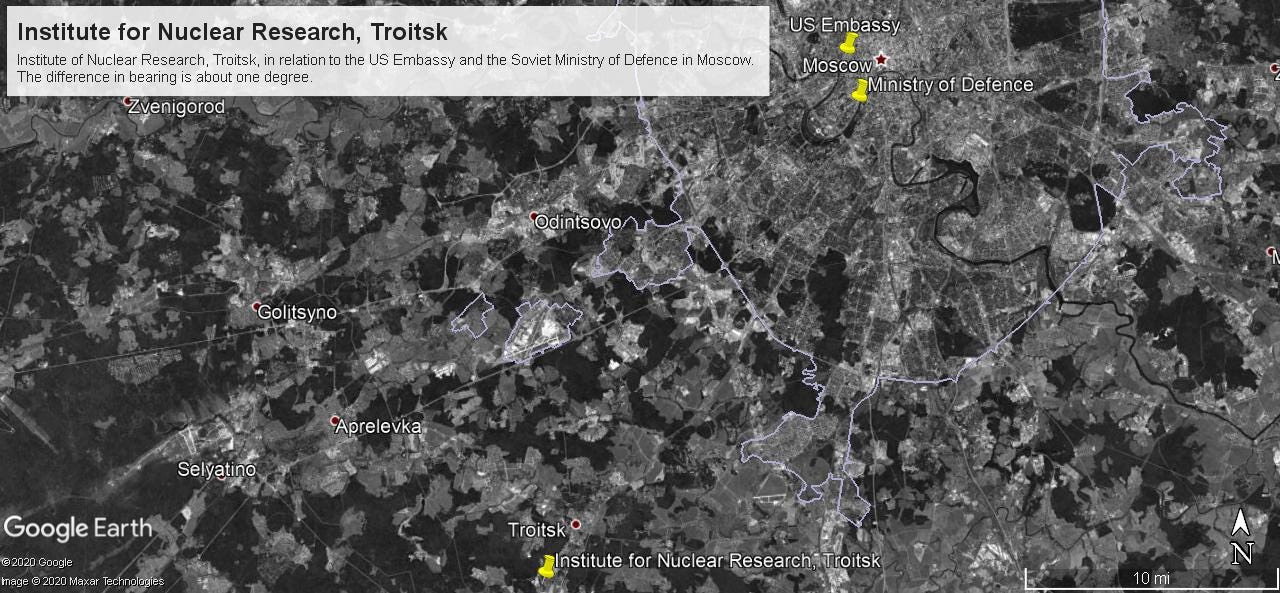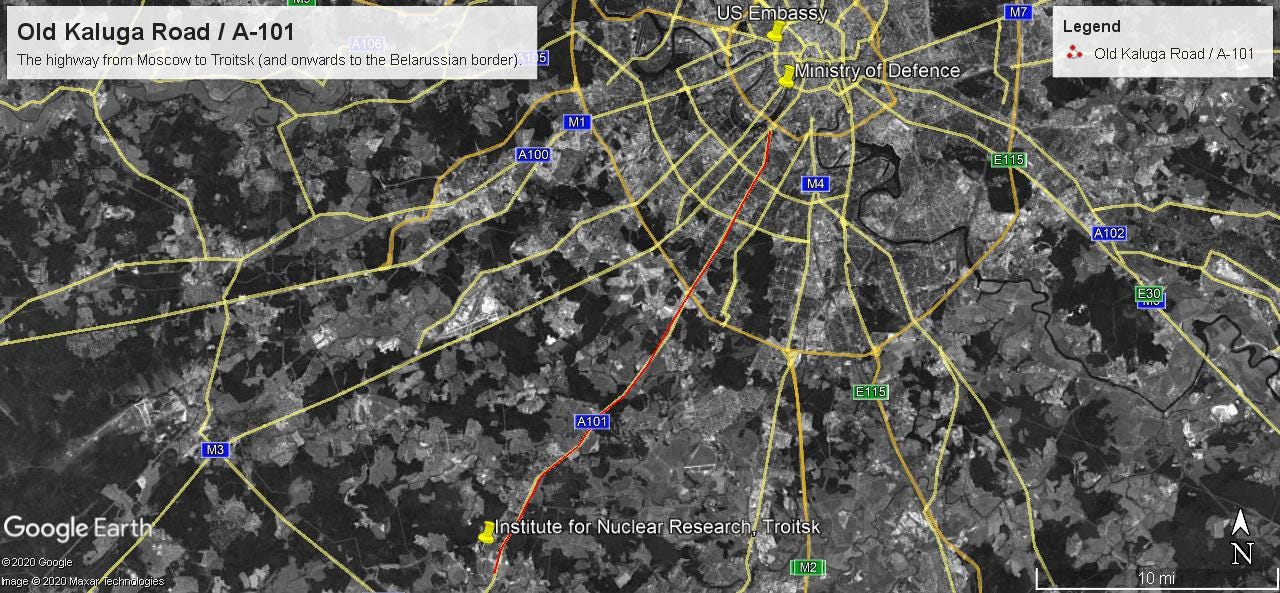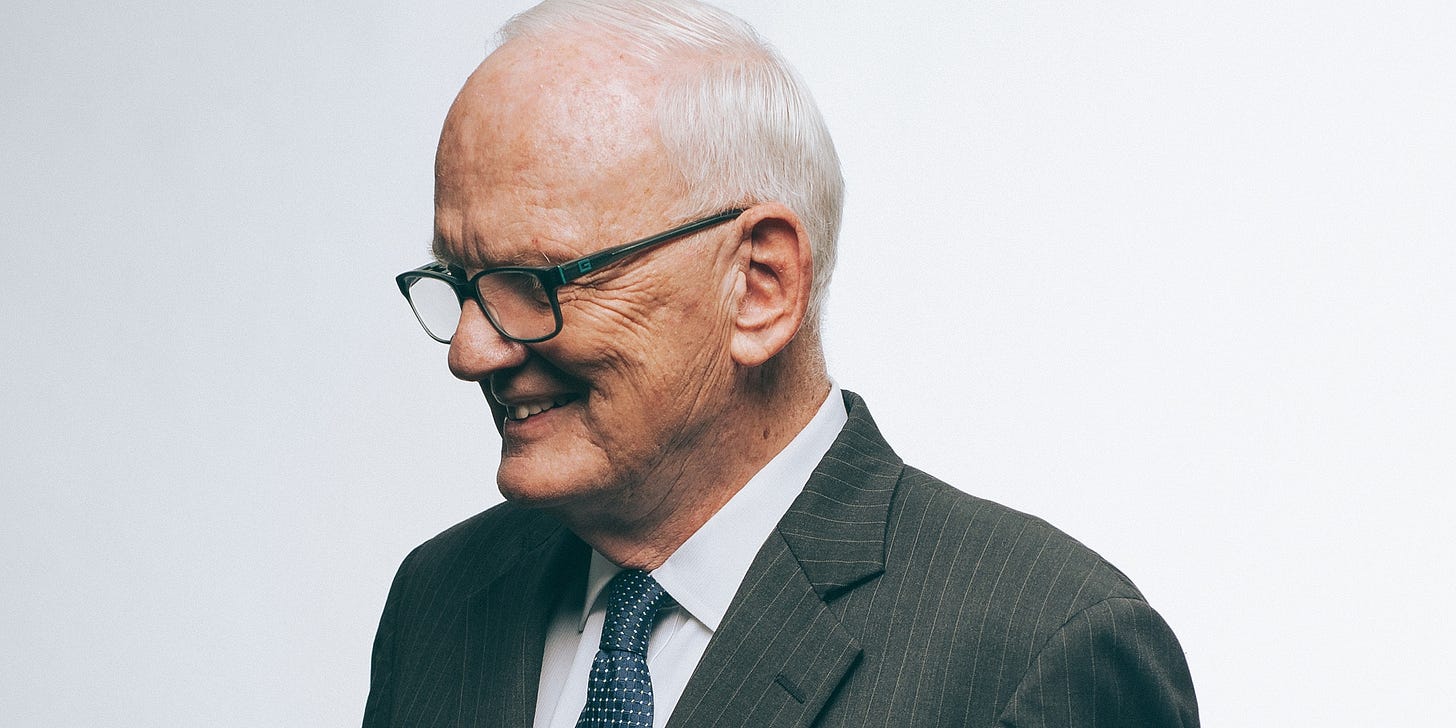Mission Impossible in 1970s Moscow
High-tech face masks, low-tech tradecraft, and a husband and wife spy team pitted against KGB counterintelligence in the heart of the Soviet Union.

Old Kaluga Road, Outside Moscow
One ordinary day in the late 1970s, a blue-collar Russian carrying a backpack alighted from a bus on a highway some distance south-west of Moscow. The only other passenger to alight at the bus stop was an ordinary-looking old lady. The man turned north-east and began walking back in the direction of Moscow. The babushka ambled away from Moscow. The man turned around a few times, suspicious of the babushka. When she was far away and he was certain she wasn't paying any attention, he took stock of traffic on the highway and, in a lull, ran across to the other side. Then he dived to the ground and lay still in the grass a few feet from the highway. And waited.

We can neither confirm nor deny if the blue-collar Russian resembled this guy.
US Embassy, Moscow
Months earlier, signals analysts at the CIA station in Moscow had made a curious discovery. Even though Microwaves are supposed to be point-to-point, in the sense that their beams are narrow and can be directed precisely to the intended receiver, whenever it rained in Moscow, CIA station could listen in to communications between the Institute for Nuclear Research at Troitsk, a nuclear weapons facility, and the Soviet Ministry of Defence in Moscow. The raindrops caused the microwave beam to disperse.

The Soviets soon realised this themselves, and the link between Troitsk and Moscow was shut down. But in the few days or weeks during which it had been operational, the CIA had learnt a fair bit. For one thing, they'd been able to corroborate that the Troitsk facility was involved in weapons research and had also collected scattered bits and pieces of information about the kind of research being performed there. But its utility was limited. Participants appeared to be aware of the insecure nature of this communications channel. More importantly, they had overheard these participants mention a new communications system that would be more secure.
CIA Headquarters, Langley
In the months following the shutdown of the microwave link, CIA spy satellites spotted the construction of an underground duct along the A-101 highway or Old Kaluga Road that ran from Moscow to Troitsk and further to the borders of Belarus. Soviet crews appeared on satellite imagery building the underground duct, installing manholes for access shafts, installing cables in the duct, etc. But the limitations of satellite imagery meant that the CIA had no way of knowing exactly which of those many cables were relevant.

Despite that, the discovery of the duct had spooks at Langley salivating. With additional security arising out of the communications medium being an underground cable, the information exchanged would be 'looser', more valuable. At roughly the same time, an operations officer named James Olsen and his wife — who was also an operations officer — were undergoing the Denied Area Course. This was a year-long period of training and evaluation prior to their being posted to the US Embassy at Moscow.
A park near Moscow
After completing the Denied Area Course, James and Meredith Olsen were posted to the embassy in Moscow under official cover as diplomats. Months passed with the couple busy performing their official duties in addition to their real jobs as spymasters. It was a stressful time thanks to the KGB whose counterintelligence agents would keep them under surveillance and make their real job significantly more difficult.
One beautiful day, James and Meredith took their children to a park. They were followed by their KGB detail. While the family was enjoying a lovely picnic, James stepped away into the bushes to relieve himself. Meredith ensured that the attention of the KGB detail remained fixed on her and the children. Once he was out of sight, James slipped on a Semi Animated Mask — think Mission Impossible or Planet of the Apes — and clothes typically worn by blue-collar Russians.
The clothes had been carefully procured from different Eastern European countries. The mask had been prepared to give him Slavic features and completely change his appearance. Once he had slipped on his disguise, James walked past the KGB detail and boarded a bus that dropped him and the babushka on the Old Kaluga Road between Moscow and Troitsk, and that is how he found himself lying on the ground beside the highway, waiting.
Old Kaluga Road, Outside Moscow
Once he was certain that the babushka was out of sight, James walked about a mile towards Moscow, crossed a field, and crawled the last few hundred yards to reach the manhole. Then he retrieved a hook from his backpack and used it to lift the manhole cover. Inside he saw a 20-foot drop, water at the bottom, and no ladder. But before he could enter, he had to ensure the duct did not contain noxious gases. The CIA had provided just such a gadget, which he attached to a rope and lowered into the tunnel. Then he retrieved a nylon ladder from the backpack, and then lay prone on the ground, hoping to remain unobserved. It took twenty minutes for the device to analyse the air composition and flash an all clear.

Again, we can neither confirm nor deny if James Olsen grimaced in this manner.
Once he had climbed down the ladder, he retrieved another device and spent the next few hours applying the device's sensors externally and gently to each cable in the duct turn by turn and recording the signals onto a tape. The sensors had been designed to ensure that no signs of infiltration remained on the cables. All in all, he spent at least two hours in the duct, all the while anticipating arrest and a quick trip to Lubyanka Prison, followed by enhanced interrogation. After each cable had been checked in this manner, he stowed the device back in his backpack, climbed up the ladder, stowed the ladder into the backpack, replaced the manhole cover, stowed the hook in his backpack, and then began walking back towards the bus stop.
He took the bus back to the park, removed his disguise, and returned to his family. Many hours had passed, and the KGB detail had to have been suspicious by then. As the Olson family wound up their picnic and got back into their car, James and Meredith's nervousness peaked. The KGB could easily stage an accident, cause a roadblock, and then search every car. The backpack in the car wouldn't remain hidden in the event of such a search, and all their efforts would be in vain. They relaxed only after driving through the embassy gates.
CIA Headquarters, Langley
The signals captured on the tape were analysed and the right cable was identified. The CIA then had a similar device placed on the identified cable in another operation remarkably like what James had executed. Following that, every once in a while, a CIA operative would evade their KGB detail, make their way down that manhole, and retrieve the signals captured by the device, replacing the tape with a fresh one.
The CIA eavesdropped on communications between the Institute of Nuclear Research at Troitsk, and the Soviet Ministry of Defence in Moscow for five years until finally a retrieved tape was found to be blank. That was when the operation was assumed to have been blown and was discontinued. It turned out that the agent who had given up Adolf Tolkachev to the KGB had also revealed the existence of the 'wiretap'.

James Olson now teaches at a university in Texas.
If you enjoyed reading this, subscribe to Espionage& using the button below to receive stories in your inbox.
You will also enjoy reading my spy novels: Let Bhutto Eat Grass & Let Bhutto Eat Grass: Part 2 deal with nuclear weapons espionage in 1970s India, Pakistan, and Europe.




